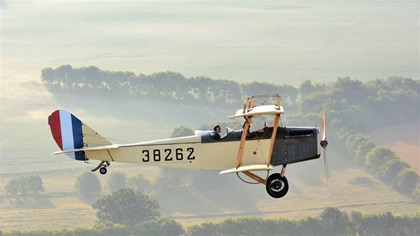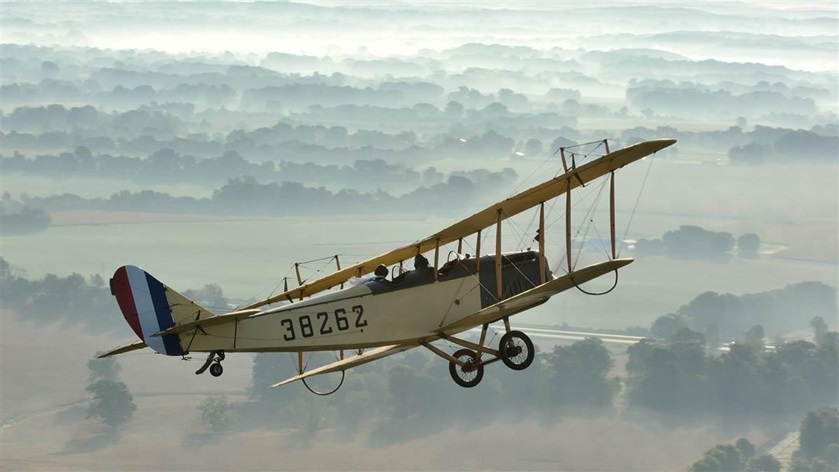
A Kentucky-based 501(c)(3) nonprofit seeks to acquire and restore to flying status the only surviving DH-4 airframe remaining in its original, as-delivered-to-the-military configuration.
Geoffrey de Havilland designed the D.H.4 for Britain’s Airco as a light, two-seat daylight bomber. A two-place, open-cockpit biplane of wood and fabric construction, the prototype made its first flight in August 1916. Eventually it also was produced by several manufacturers in the United States. American-built aircraft were powered by the Liberty L-12—a 1,649-cubic-inch, water-cooled V-12 that produced 400 horsepower. Some 9,500 DH-4s were ordered from American manufacturers; more than 1,000 made it to France during World War I. Most of the remainder were modified and upgraded after the war.
Friends of Jenny, LLC., was founded to bring the early American aviation story to the general public. It acquired a 1917 Curtiss JN-4 biplane replica and restored it to flying condition over a 14-month period. For the past two years, the organization has been touring the Jenny, primarily in the southeastern United States.
When the United States was drawn into World War I in 1917, it had no air force, Walker noted. America applied innovation, engineering, creativity, and business acumen to create its first warplane, the DH-4 “Liberty Plane”—powered by the Liberty engine, which was built primarily by Ford. The airplane was in the skies over France by August 1918. It served 13 Army aero squadrons and four Navy/Marine squadrons during the war, Walker said.
“But the Liberty Plane's story did not end with the war. Its large and powerful engine, speed, and ruggedness made it perfect to carry the U.S. air mail, creating the first transcontinental air mail routes,” he said. “The U.S. Army continued to use the Liberty Plane when it won the first transcontinental air race. The DH-4 Liberty Plane was the cornerstone and foundation for the development of commercial aviation today.

“We have located what is believed to be the last known DH-4 airframe in America. It, and the accompanying parts, will be used to reconstruct the aircraft to flying status,” Walker said. “Once complete, this will be a full-sized, flying version of the original DH-4 Liberty Plane as delivered to the U.S. military.”
This airplane, with an accompanying traveling educational exhibit, will join the organization’s World War I-era Curtiss JN4 Jenny to share the significant story of early aviation.
Timing of the acquisition and restoration are important. A flying DH-4 will celebrate three important centennials: The World War I centennial in 2017-2018; the centenary of the first transcontinental air race in 2019, and the centenary of the first transcontinental air mail run in 2020.
“The DH-4 Liberty Plane project has been endorsed by the United States WW1 Centennial Commission,” Walker said. “The centennial is a timely and essential opportunity to educate the country's citizens about the causes, courses, and consequences of this war; to honor the heroism and sacrifice of those Americans who served; and to commemorate through public programs and initiatives the centennial of this global event.” And the DH-4 is an appropriate symbol, he added. “During the course of the war, air crews were awarded eight Congressional Medals of Honor—four of those went to DH-4 crews.”
The organization has launched a Kickstarter campaign with a goal of raising $60,000. Under Kickstarter rules, the project will be funded only if least $60,000 is pledged by June 8.
The organization is ready, if not anxious, to move forward with the project. “We believe that the DH-4 can be built in 14 months,” Walker said; adding two months for flight testing results in a 16-month schedule from a green light. Friends of Jenny will be the subject of an article in an upcoming issue of AOPA Pilot.
